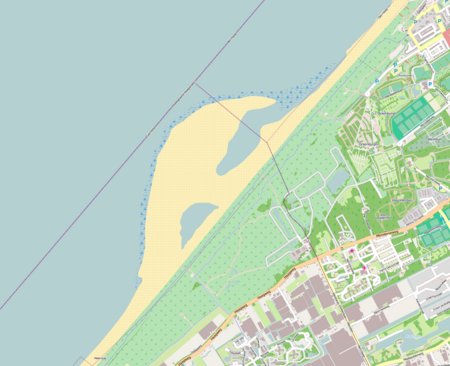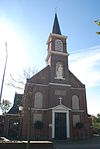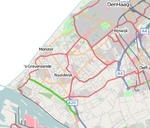During May 10 to May 12, 1940, Ockenburg, a small Dutch auxiliary airfield near The Hague, was the scene of bitter fighting between German airborne forces and Dutch defenders during World War II.
A German formation of one airborne company of Fallschirmjaeger Regiment 2 and a battalion of Air landing troops of IR.65 (22.ID) was envisaged to take the small Air Force Base (AFB) by surprise attack. The strike was part of the grand strategy to seize the Dutch city of the Hague, where the Dutch Royal Family, Cabinet and Military headquarters were situated. The German battle-plan incorporated large combined airborne and airlanding elements to land at the large Dutch AFB's at Valkenburg (South Holland) and Ypenburg and a smaller party at Ockenburg. These three AFB's were situated east, south and west of the Hague. Around 8,000 Germans were scheduled to land and march onto the Hague, snatching the Dutch Royal Family and beheading the Dutch military by capturing their command-centres.
The German air-operation against the Hague failed utterly. At Ypenburg AFB the German airborne battalion and follow-up air landing units initially gained some successes, but they were rapidly pushed into defence. Many were captured or killed. Some hundreds managed to sustain Dutch counter-attacks isolating themselves in the hamlet Overschie.
At Valkenburg the Germans first managed to seize the airfield running the Dutch defenders off. But after re-grouping the Dutch countered the German pocket and pushed the about 1,000 men strong German presence into a tight defence in the village Valkenburg itself. The Dutch wouldn't manage to force the surviving Germans into surrender though.
The landing at Ockenburg too resulted in initial German seizure of the AFB during which 25 Dutch defenders were KIA. But within short the German landing party - no more than around 400 men - were driven off of the pitch and pushed into the dune area between the AFB and the North Sea. In a daring attempt to break out during the following days, the German force (led by the commander of 22.ID, Lieutenant General Hans Graf von Sponeck himself) managed to outmanoeuvre quite substantial Dutch formations and eventually reach the German held pocket at the hamlet Overschie. At that position a combined remnant force of around 1,000 German invaders managed to hold out until being relieved by German ground-forces in the evening of May 14, 1940, after the Rotterdam Blitz.











